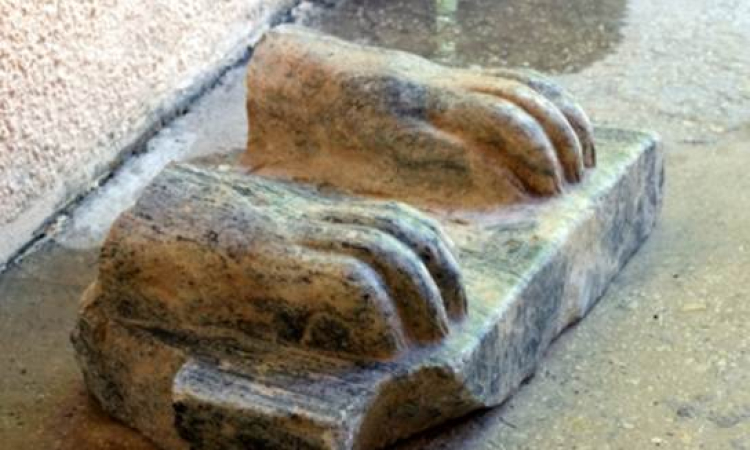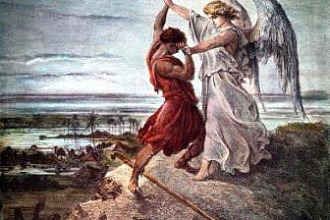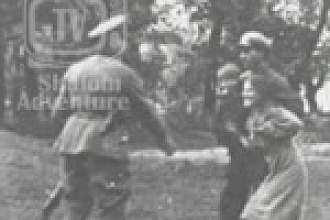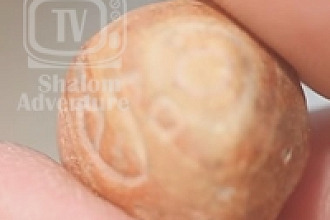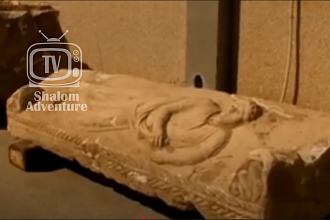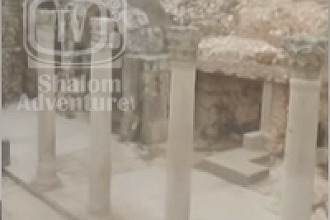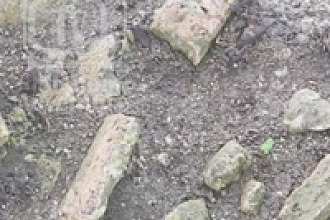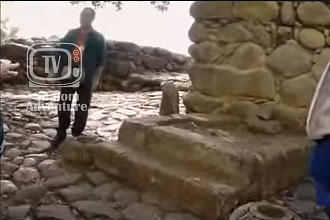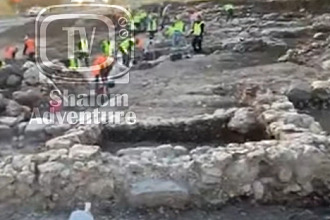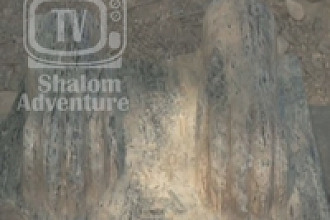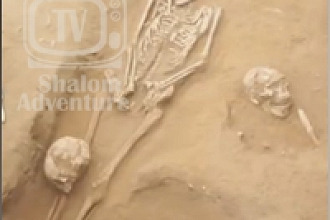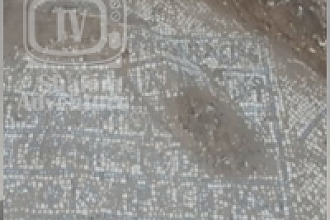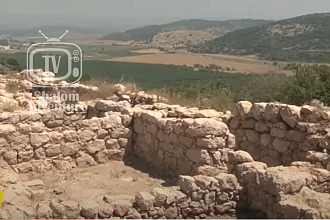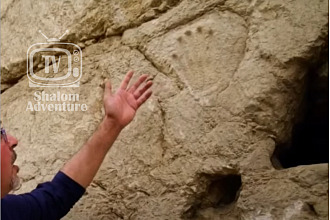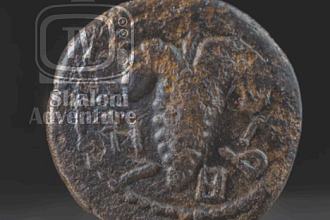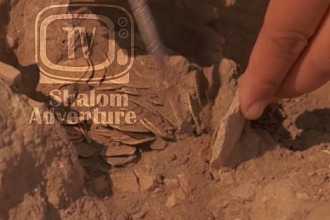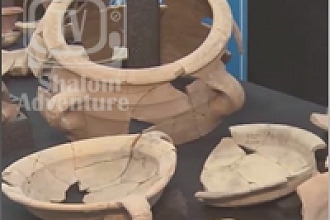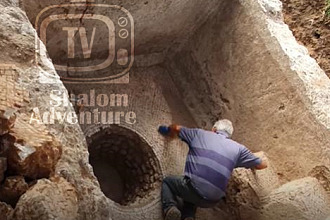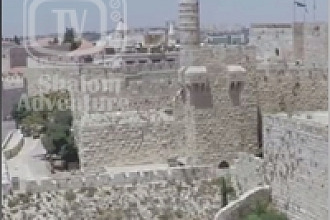Jerusalem, July 9, 2013 — As modern Egypt searches for a new leader, Israeli archaeologists have found evidence of an ancient Egyptian leader in northern Israel.
At a site in Tel Hazor National Park, north of the Sea of Galilee, archeologists from the Hebrew University of Jerusalem have unearthed part of a unique Sphinx belonging to one of the ancient pyramid-building pharaohs.
The Hazor Excavations are headed by Prof. Amnon Ben-Tor, the Yigael Yadin Professor in the Archaeology of Eretz Israel at the Hebrew University's Institute of Archaeology, and Dr. Sharon Zuckerman, a lecturer at the Hebrew University's Institute of Archaeology.
Working with a team from the Institute of Archaeology, they discovered part of a Sphinx brought over from Egypt, with a hieroglyphic inscription between its front legs. The inscription bears the name of the Egyptian king Mycerinus, who ruled in the third millennium BCE, more than 4,000 years ago. The king was one of the builders of the famous Giza pyramids.
As the only known Sphinx of this king discovered anywhere in the world — including in Egypt — the find at Hazor is an unexpected and important discovery. Moreover, it is only piece of a royal Sphinx sculpture discovered in the entire Levant area (the eastern part of the Mediterranean).
Along with the king's name, the hieroglyphic inscription includes the descriptor "Beloved by the divine manifestation... that gave him eternal life." According to Prof. Ben-Tor and Dr. Zuckerman, this text indicates that the Sphinx probably originated in the ancient city of Heliopolis (the city of 'On' in the Bible), north of modern Cairo.
The Sphinx was discovered in the destruction layer of Hazor that was destroyed during the 13th century BCE, at the entrance to the city palace. According to the archaeologists, it is highly unlikely that the Sphinx was brought to Hazor during the time of Mycerinus, since there is no record of any relationship between Egypt and Israel in the third millennium BCE.
More likely, the statue was brought to Israel in the second millennium BCE during the dynasty of the kings known as the Hyksos, who originated in Canaan. It could also have arrived during the 15th to 13th centuries BCE, when Canaan was under Egyptian rule, as a gift from an Egyptian king to the king of Hazor, which was the most important city in the southern Levant at the time.
Hazor is the largest biblical-era site in Israel, covering some 200 acres, and has been recognized as a World Heritage Site by UNESCO. The population of Hazor in the second millennium BCE is estimated to have been about 20,000, making it the largest and most important city in the entire region. Its size and strategic location on the route connecting Egypt and Babylon made it "the head of all those kingdoms" according to the biblical book of Joshua (Joshua 11:10). Hazor's conquest by the Israelites opened the way to the conquest and settlement of the Israelites in Canaan. The city was rebuilt and fortified by King Solomon and prospered in the days of Ahab and Jeroboam II, until its final destruction by the Assyrians in 732 BCE.
Documents discovered at Hazor and at sites in Egypt and Iraq attest that Hazor maintained cultural and trade relations with both Egypt and Babylon. Artistic artifacts, including those imported to Hazor from near and far, have been unearthed at the site. Hazor is currently one of Israel's national parks.
The Hebrew University began the Hazor excavation in the mid-1950s and continued them in the late 1960s. Excavations at the site were resumed in 1990 by Prof. Amnon Ben-Tor, who was joined in 2006 by Dr. Sharon Zuckerman, as part of the Selz Foundation Hazor Excavations in Memory of Yigael Yadin. The present excavation area is managed by Shlomit Becher, a doctoral student of the Hebrew University's Institute of Archaeology, and is sponsored by the Israel Exploration Society (IES) in cooperation with the Israel Antiquities Authority and the Israel Nature and Parks Authority.
About the Institute of Archaeology
The Institute was founded in 1934 as the Department of Archaeology of the Hebrew University of Jerusalem. In 1967 it became the Institute of Archaeology. Today the Institute is an independent research and teaching unit within the Faculty of Humanities, with a staff that provides administrative and scientific assistance as well as the technical facilities necessary to carry out its research projects. Academic programs include studies for B.A., M.A. and Ph.D. degrees in prehistoric, biblical and classical archaeology.
About the Hebrew University of Jerusalem
Ranked among the top academic and research institutions worldwide, the Hebrew University of Jerusalem is Israel's leading university and premier research institution. Serving 23,000 students from 70 countries, the Hebrew University produces a third of Israel's civilian research and is ranked 12th worldwide in biotechnology patent filings and commercial development. Faculty and alumni of the Hebrew University have won seven Nobel Prizes and a Fields Medal in the last decade. The Hebrew University was founded in 1918 by visionaries including Albert Einstein, Sigmund Freud, Martin Buber and Chaim Weizmann. It is located on three campuses in Jerusalem and a fourth in Rehovot.
Come join us for an exciting trip to Israel in 2014. For more information, click here

